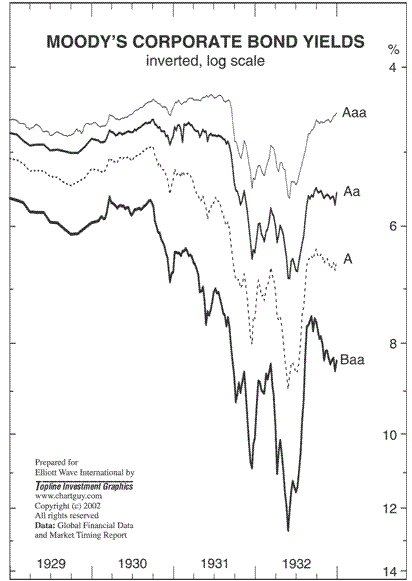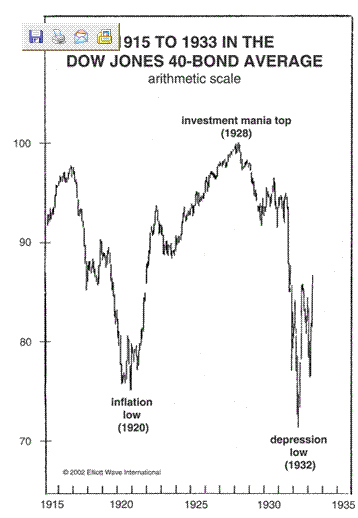Long-term U.S. Treasury bonds have fallen 7% in value since November 1 and municipal bonds have fallen 6%. “Safe” investments like Treasury’s and Munis are not supposed to crash they are the mainstay of widows and orphans. So What’s happening?
For most of the last century, the whole world has believed the obligations of the U.S. government – and the obligations of thousands of states, cities, towns, and other municipalities in the U.S. – were the safest investments in the world. These “safe” investments aren’t supposed to crash. The following article by Elliottwave Internations shows why Bonds are no longer safe. Tim McMahon~ editor
Why Bonds Do Not Provide Shelter From The Storm
December 23, 2010
By Elliott Wave International
TREASURIES — the very name conveys a thing that is secure, protected, and will appreciate over time. Otherwise, it’d be called something like “TRASHeries” or “Mattress Stuffers.” Then, there’s the official seal of the US Department of Treasury: its image of a scale and a key symbolize “balance” and “trust.”
And, finally, there’s the mainstream economic experts who have it on good authority that long-term bonds increase in value during financial instability and uncertainty.
On this, the following news items from November-December 2010 reflect the enduring faith in fixed-income assets as the ultimate safe-havens:
- “Bonds Tumble On Signs of Economic Recovery” (Reuters)
- “US Treasury Prices Rise as traders positioned for negative headlines….” (Associated Press)
- “Treasury’s rise as investors sought shelter in safe haven assets amid rising fears about sovereign debt woes in the eurozone. The slow motion train wreck is likely to play out over year end as each country plays musical chairs with solvency. The market’s concern here is ‘What is next?’ The 10-year Treasury yield will fall if the problems get worse from here.” (Wall Street Journal)
There’s just one problem with this notion: namely, bonds (of any denomination) do NOT have a built-in disaster premium. This is the myth-busting revelation of the latest, free report from Elliott Wave International. The resource titled “The Next Major Disaster Developing For Bond Holders” includes a thoughtful selection of various EWI publications that expose the very real vulnerability of bond markets to economic downturns.
The premier study on the subject comes from Chapter 15 of EWI President Robert Prechter’s book Conquer The Crash by way of this memorable excerpt:
“If there is one bit of conventional wisdom that we hear repeatedly with respect to investing, it is that long-term bonds are the best possible investment [in downturns]. This assertion is wrong. Any bond issued by a borrower who can’t pay goes to zero in a depression. Understand that in a [major contraction], no one knows its depth and almost everyone becomes afraid. That makes investors sell bonds of any issuers that they fear could default. Even when people trust the bonds they own, they are sometimes forced to sell them to raise cash to live on. For this reason, even the safest bonds can go down, at least temporarily, as AAA bonds did in 1931 and 1932.
The first chart (see below) shows what happened to bonds of various grades in the deflationary crash. And the second chart (see below) shows what happened to the Dow Jones 40-bond average, which lost 30% of its value in four years. Observe that the collapse of the early 1930s brought these bonds’ prices below — and their interest rates above — where they were in 1920 near the peak in the intense inflation of the ‘Teens.”
That’s just the tip of the iceberg in this myth-busting report.
“The Next Major Disaster” uncovers flaws in other widely-accepted bond lore as well.
Get your free Copy of the full 10-page report Here.
This article was syndicated by Elliott Wave International and was originally published under the headline Long-Term Bonds: The Best Possible Investment? Think Again. EWI is the world’s largest market forecasting firm. Its staff of full-time analysts led by Chartered Market Technician Robert Prechter provides 24-hour-a-day market analysis to institutional and private investors around the world.


